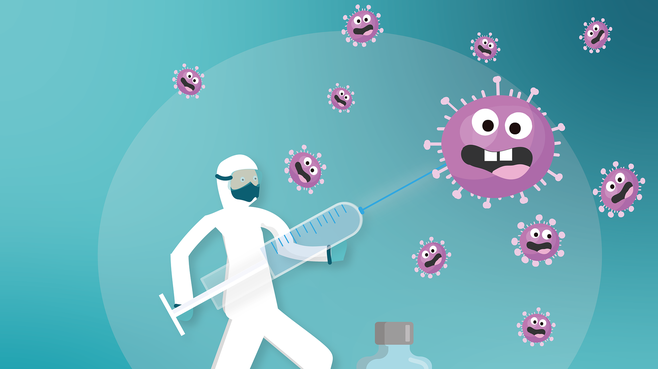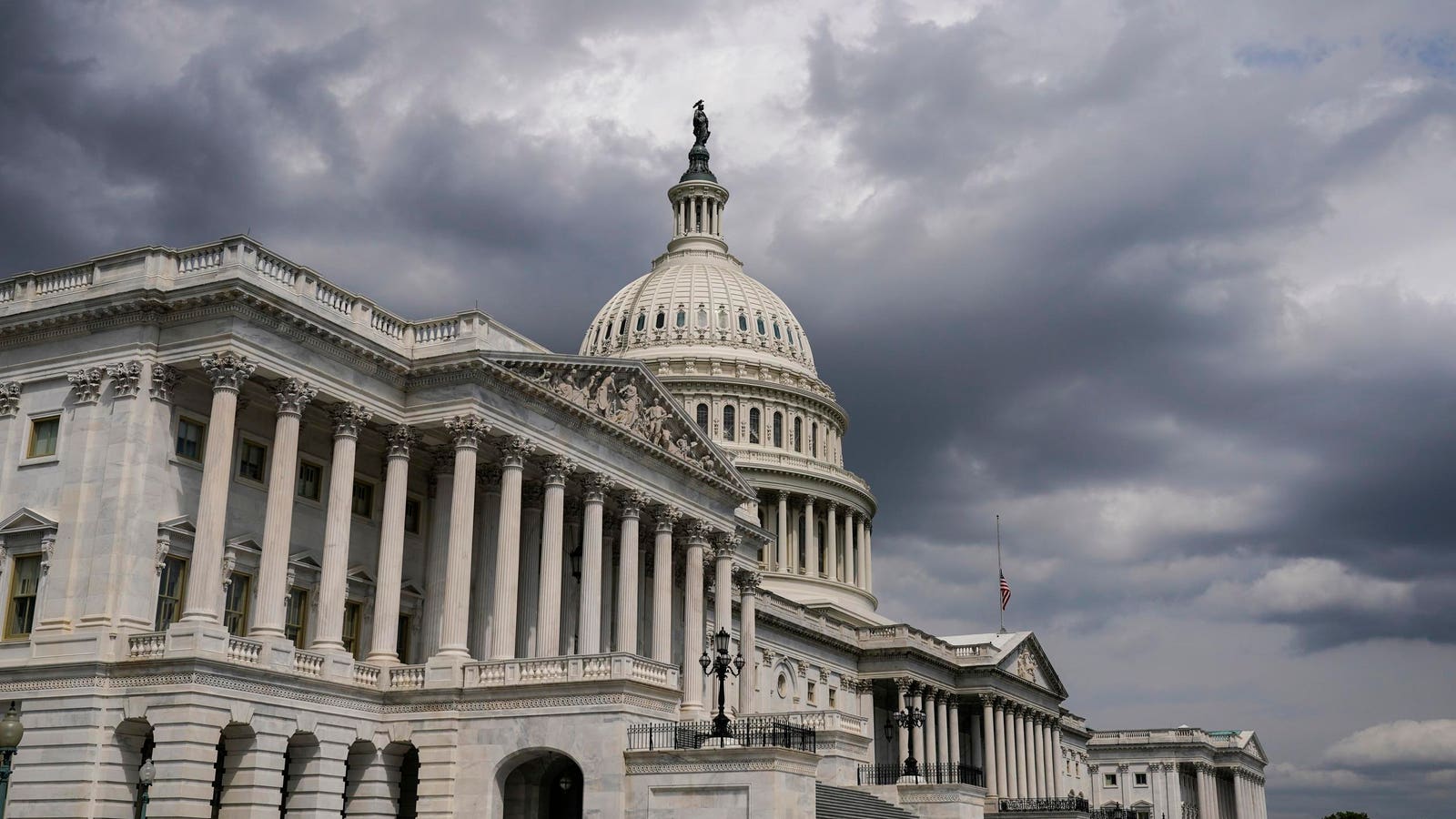Here is an excerpt of an information report for the French Senate. As you could see, they have a lot of ideas for us!
Health crises and digital tools: responding effectively to regain our freedoms
B. TOMORROW, CRISIS MANAGEMENT THROUGH DIGITAL TECHNOLOGY?
1. Health crises, natural disasters, industrial accidents
As we can see, the prospects opened up by the use of digital technologies are immense, and
the Covid-19 crisis has only given a foretaste of the many possible uses, in the short, medium or long term.
While the Covid-19 pandemic is not over, and is likely to be neither the last nor the strongest,
it would be irresponsible not to seize such opportunities. The widespread restrictions imposed on "physical" freedoms in recent months are increasingly untenable. They are neither sustainable, nor even very effective, compared to what a more systematic use of digital technology would allow.
The use of digital technology would allow to precisely control the respect of sanitary measures, at an individual level and in real time: in return, the restrictions could be targeted on a small number of people, and be more limited in time, while having a maximum efficiency. Perhaps tomorrow, thanks to digital technology, we will be able to regain our "physical" freedoms more quickly, or even never give them up, and have pandemics without containment - even if no vaccine or treatment is available.
There are many possible tools, but at least in the short and medium term, the most obvious use cases concern the control of the respect of rules aiming at limiting the transmission of the virus (sanitary pass, curfews, confinements, quarantines, etc.), which implies crossing three types of data: identification data, medical data, and location data (from the most intrusive, with GPS tracking, to the lightest and most occasional, with conditional access to certain places, and including relative location data with contact tracing).
The usefulness of digital tools in crisis management goes beyond the health sector, and also extends to other types of crises, particularly those related to so-called "CBRN" risks, which are nuclear, radiological, biological and chemical, and which have in common that they present a high and imminent danger to the population, requiring a rapid and effective response. These can be the result of a deliberate attack (conventional or terrorist, especially bioterrorist), but also of an industrial accident or a natural disaster (including without CBRN dimension: tsunami, earthquake, flood, etc.). Facebook's Safety Check, for example, is used in all these cases. All these situations may require to quickly identify people, to assess their health status or the risks they are facing, and to precisely locate them in order to assist them.
The following developments expose some potential use cases, through a typology based on the purposes of the measures, which can be very different for the same underlying technology. This list is necessarily incomplete, uncertain, and debatable: it is a prospective exercise.
2. An attempt at a prospective typology
a) Information and incentives
In the context of crisis management, information - on the risks involved, on the applicable rules, etc. - is also an incentive. - is also an incentive.
Most of the measures implemented in France, and in Western countries in general, during the Covid-19 crisis actually fall into this category, since they are non-binding and generally do not involve the transmission of personal data to a third party. This is the case of the TousAntiCovid application, in its initial contact tracing functionality (sending a notification in case of contact with an infected person), but also in its additional functionalities: statistics on the evolution of the epidemic, information on barrier actions and steps to follow, etc. The tools that make it easier to book appointments for screening tests or vaccinations (Doctolib, ViteMaDose, etc.) are also related to this.
Beyond the health field, in addition to Facebook's Safety Check already mentioned, we can mention the Amber Alert system, the American equivalent of the Kidnapping Alert, which has existed since 2002 and allows for the precise targeting of people located in a certain area (see below).
In the future, we could imagine many other cases of use. For example, in France, regular iodine pellet distribution campaigns have taken place since 1997 for people living near a nuclear power plant (within a 10 km radius), in order to protect their thyroid in case of a nuclear accident. These pellets are made available in a network of partner pharmacies, but the process is purely voluntary and, in 2016, only 42% of households had withdrawn their pellets, and only 27% of establishments receiving the public. Thanks to digital technology, it would be possible to organize reminder campaigns on smartphones, and above all, in the event of a nuclear accident, it would be possible to locate all the people in the area without delay, and to provide them with assistance.
b) Assistance
The data used to inform individuals could, if the circumstances require it, inform at the same time the health professionals or the authorities in charge of the crisis management, in order to assist vulnerable people as soon as possible.
For example, in the case of a rapidly spreading epidemic or a very high mortality rate, medial teams could immediately go to the homes of vulnerable people (or wherever they are), to vaccinate them, treat them or bring them to safety. This is not a question of reaching out to "all people over 65" or "all the inhabitants of a given town": data cross-referencing and the use of artificial intelligence make it possible to target people in the finest possible way. For example:
- by exploiting genetic data, it could be possible to immediately identify people who are receptive to a very rare variant of a virus, or to a particular vaccine or treatment, and thus mobilize medical resources much more efficiently. Without going that far, the simple automated exploitation of the medical file of each individual in a target population could already make it possible to do a lot;
- by exploiting data from connected objects, which could also be accessible from the digital health space, it could be possible to intervene upstream of the onset or deterioration of symptoms: data from ECGs, connected scales, connected thermometers, thermal cameras detecting feverish symptoms, etc. ;
- by exploiting mobility data, it could be possible to position teams (for information, testing, vaccination, etc.) in the right places and at the right times to intervene with a maximum number of people (a transport hub, a public gathering, etc.), who may have been warned in advance.
Again, these use cases are not limited to health crises: in the event of an industrial disaster, for example, people who are particularly vulnerable to certain chemicals could benefit from priority evacuation or special care, regardless of where they are located.
Another example is the fall of space debris: the phenomenon, which is rare today, could become much more important in the future, with the increase in the ageing of the satellite fleet, and especially the development of "constellations" of small satellites. For example, the Starlink project, led by the company SpaceX, plans to put 12,000 satellites into low earth orbit by 2025, a figure to be compared with the 2,000 satellites in activity today. Some 30,000 objects larger than 10 cm are currently in orbit, mostly space junk, often small but out of control and likely to crash to Earth or collide with other satellites, generating even more waste.
The risk of collision of space objects
The objects we send into orbit take up space, as does the debris they create. As the area occupied by objects in space increases, so does the probability of collision. Red (PL) = satellites; Orange (RB) = launchers; Dark green (RM) = launcher-related object.
Source: European Space Agency (ESA)
Some measure close to a ton, like the GOCE satellites (5 meters long), which crashed to Earth in 2013, or the launchers of the Chinese space station Tiangong (Long March): one crashed in 2018 after the Chinese authorities lost control of it, another in 2020 near a village in Côte d'Ivoire, fortunately without causing any damage, and yet another, a segment of 18 tons, ended its course last May 9 in the Indian Ocean35(*).
However, although current means allow us to estimate the point of fall of debris fairly precisely, as indicated by the European Space Agency (ESA), which publishes an annual report on this subject36(*), this is only known at the last moment, once the initial object has disintegrated in the atmosphere. In these circumstances, the ability to warn the population immediately is crucial, and only digital technology makes this possible.
c) Coercion and control
Even if they are rarely presented as such, devices such as the health pass or the health passport do fall into the category of constraining tools, because they condition, de facto or de jure depending on the case, access to certain places and activities. In itself, there is nothing exceptional about this: the "real" passport, the international vaccination card or the driver's license do the same thing, i.e. authorize or prohibit, which is one of the main functions of public power.
But the nature of the constraint changes when it is exercised through a control, if necessary accompanied by sanctions. And it is precisely here that digital technology could be the most "effective".
Let us specify that there are more implicit forms of control or constraint, but no less effective: a subway entrance gate that would start ringing very loudly when a contagious person or a person who is supposed to be confined passes by would in most cases be sufficiently dissuasive so that it would not even be necessary to transmit this information to the authorities in charge of controlling compliance with the rules. In early 2021, the press reported the case of a connected box, worn around the neck, that would ring (with an 85-decibel sound) in the event of non-compliance with distancing rules by employees of a company37(*). The initiative has been denounced as anxiety-provoking and unacceptable. Technically, however, there is no need for a box around the neck: a smartphone can do the same thing with its Bluetooth, and a sound of 100 decibels. In Asia, social control has taken much less anecdotal forms: in South Korea, the positive inhabitants of a neighborhood could be geolocated on a map accessible to all, and in China, we have seen honest citizens take charge of the "sanitary police" of their building. More generally, the social credit system (see above), although it rarely involves effective sanctions, is linked to this logic of social control.
Finally, in the most extreme crisis situations, digital tools could enable effective, exhaustive and real-time control of the population's compliance with restrictions, with dissuasive sanctions if necessary, and based on even more derogatory exploitation of personal data.
These tools are the most effective, but also the most damaging to liberties - but once again, it would be irresponsible not to at least consider them, if only to convince oneself to do everything upstream to avoid reaching this point. Numerous cases of use are possible, and notably :
-
control of movements: electronic bracelet to control the respect of quarantine, deactivation of the pass for public transport, automatic detection of the license plate by radars, gantries in stores, thermal cameras in restaurants, etc. ;
-
health monitoring, via connected objects whose use would be mandatory this time, and whose data would be used for monitoring purposes;
-
the control of company contacts, for example going to see a vulnerable member of one's family when one is contagious;
-
transaction monitoring, e.g. to impose an automatic fine, to detect a purchase of a medical nature (which may suggest either contamination or smuggling in times of shortage), or the illegal pursuit of a professional activity (trade, etc.) despite restrictions.
d) Insurance
Located between simple information and direct constraint, but almost absent from the public debate, the insurance model nevertheless raises interesting questions.
At the individual level, restrictions are often difficult to live with and necessarily binary (to go out or not to go out), whereas they correspond to a low individual risk of catching or transmitting the disease (at least in the case of Covid-19). At the societal level, on the other hand, this risk is measured in a much more detailed way (the mortality rate, the occupancy rate of resuscitation beds, etc.) and corresponds to a collective financial cost (for example, investment in care structures, overtime pay or the purchase of vaccines).
Rather than drastically restricting the individual liberties of the entire population or of a part of it that might consider this unacceptable38(*) , digital technology could make it possible to internalize a fraction of the collective cost corresponding to the behavior of each individual or each group of people.
Applied to confinement, the reasoning would be as follows: every time I leave my home, I am at risk, not only for myself but also for the health system as a whole. If I still prefer to have my freedom to come and go, and I do leave my home, it is legitimate for me to assume in return a fraction of the additional cost paid by society because of the epidemic, for example in the form of a small increase in my social security contributions if the number or duration of my outings exceeds a certain threshold.
This additional cost would in any case be very minimal: this is an insurance logic (the additional cost is shared among all those who choose to go out, as this is not prohibited), and not a sanction logic, the principle of which is totally different (going out of the house is prohibited, the sanction is calculated to be dissuasive, and is all the higher as the chance of "getting caught" is low).
Such a model, of course, only works in the case of a low intensity epidemic, where the overload imposed on the health care system can be absorbed by the commitment of additional financial resources. It is therefore not adapted to acute crisis situations, where stronger measures are needed, and corresponds more to situations where it is appropriate to "live with" a circulating disease, with some adaptations.
In detail, the precise calibration of such a solution then depends on society's preferences and political choices. One could thus imagine, using the example of the alternative to confinement :
- a "universal" or "Beveridgian" system, where each exit counts equally for the calculation of the excess premium, whatever the individual risk factors or the reasons for the exit;
- an "insurance" or "Bismarckian" system, where those who run a greater risk (the elderly, for example), and therefore have a greater likelihood of burdening the health system, pay a higher price for each discharge;
- an "accountability" system, in which the additional cost depends not on the risk one takes for oneself, but on the risk one puts others at, depending for example on one's health status (vaccinated/immunized or not), the reasons for the trip (from vital professional activity to going out to a nightclub), or the circumstances of the trip (in the city, during rush hour, etc.). This last model is more "accurate" but also more intrusive, as it requires the use of more data. Depending on the criteria used, it may also involve assessing the "legitimacy" of the reasons for leaving (as with paper certificates, incidentally), as well as whether they are forced or chosen.
Beyond their differences, all these models have in common a principle of solidarity and risk sharing.
Translated with DeepL.


 www.noordhollandsdagblad.nl
www.noordhollandsdagblad.nl






